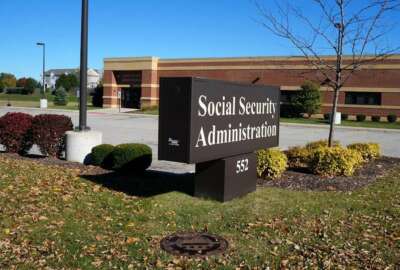The Social Security Administration wants to hire 4,000 new frontline workers to address a growing backlog of cases.
But with many employees citing unreasonable workloads and one of every eight SSA workers leaving the agency, the process of increasing staff is a steep hill to climb.
The fiscal 2023 budget request includes funding for workers in both disability determination services and frontline operations, not only to improve customer service, but also to ease the burdensome and mounting work that current SSA employees face.
The number of beneficiaries since 2010 has grown by 21%, from 54 million to 65 million, but SSA’s budget has fallen by 14% during that same time when you adjust for inflation, said House Ways and Means Committee Chairman John Larson (D-Conn.) at a May 17 hearing. Now, SSA has fewer than 60,000 employees — the lowest number in 25 years.
Engaging and retaining employees is essential to effectively serve the public, Grace Kim, SSA’s deputy commissioner for operations, said at the hearing.
“Our customers are waiting an unacceptable length of time to get their cases adjudicated and that’s in large part due to our understaffing,” Kim said.
Low staffing levels also cause a growing number of pending cases, Kim said. The agency is targeting the oldest cases — those for customers who have been waiting the longest — to process first. But that strategy is a temporary Band-Aid for bigger problems.
“We don’t have hiring. We need overtime and we need proper investment in our IT. Those are the three key areas that need to be funded in order for us to carry out our mission, and do it in a way that does not burn out our employees,” Kim said.
Along with hiring thousands of new employees, the budget request asks to increase overtime availability to expand workers’ capacity for processing cases. The agency also plans to modernize tools and offer training and career development for employees.
Those plans come after SSA reopened its doors to all in-person appointments on April 7. Kim said the agency is now focusing its onsite staff to serve customers who need to come in person or receive same-day services, including those who face barriers such as experiencing homelessness.
“Reopening our field offices to all walk-in service has restored a vital service channel necessary for these customers. While reentry has been smooth, we have significant service challenges, unprecedented call volumes for our field offices and the national 800 number challenge system capacity, causing periods of unacceptable service disruption during the pandemic,” Kim said.
But increasing the budget alone will not resolve staffing issues for SSA, said Rep. Tom Rice (R-S.C.), a committee member. Ramping up in-person work may help reduce some of the workforce issues SSA faces. About 50 to 60% of public-facing SSA staff is now working in person, but Rice said that’s not enough.
“If we did get your IT modernized and your people back in the office, I suspect a lot of these problems would go away,” Rice said at the hearing.
Rep. Ron Estes (R-Kan.), another committee member, echoed some of Rice’s concerns, saying reentry is essential to improving the agency.
“We need to get more people back into office to be more productive and get the work done,” Estes said.
Improving SSA staffing will be a long process — training for customer-facing positions at SSA typically takes two to three years. The long training time, coupled with overworked employees and an all-time low for morale, makes retention very difficult at SSA, said Peggy Murphy, immediate past president of the National Council of Social Security Management Associations and district manager of the Social Security office in Great Falls, Montana.
“It scares me when we’re recruiting employees, and they see the complexities, and they see how long it takes before they’re able to actually do what we do. When you go through that training program, it takes years to be able to understand the complexities of how to administer [the programs] that we’re going to teach you,” Murphy said.
As a result of the daunting training, low entry-level pay and inadequate resources and support, many new SSA employees will leave within the first year on the job.
“It’s very imperative that we put the work where the resources are, we shift some of the work that we can to different parts of our agency where we have the resources. The things that translate into immediate payment to our customers, we need to focus and train on those as soon as possible upon entry into working for us,” Murphy said.
The agency has an overall attrition rate of about 10%, but some components have even higher rates. For example, in SSA’s teleservice centers have about a 17% attrition rate.
High rates of attrition also impact the ability for managers to deal with poor performers in the agency, Murphy said.
On the 2021 Federal Employee Viewpoint Survey, 54.7% of SSA employees said poor performers remain in the work unit and continue to underperform, compared with 50.4% governmentwide. Additionally, 6.6% of SSA respondents said poor performers are either removed or transferred from their work unit, compared with 9% governmentwide – meaning slightly more poor performers at SSA will remain in their work unit than poor performers governmentwide.
“A poor performer is not necessarily replaced on a one-by-one replacement. If we lose somebody, we do not get to replace that person in the office that you lost them from,” Murphy said. “Oftentimes, we’re put in a definite quandary. Do we keep the employee that’s performing mediocre? Or do we lose that employee and then risk having nobody to replace them at all?”
Copyright
© 2024 Federal News Network. All rights reserved. This website is not intended for users located within the European Economic Area.

